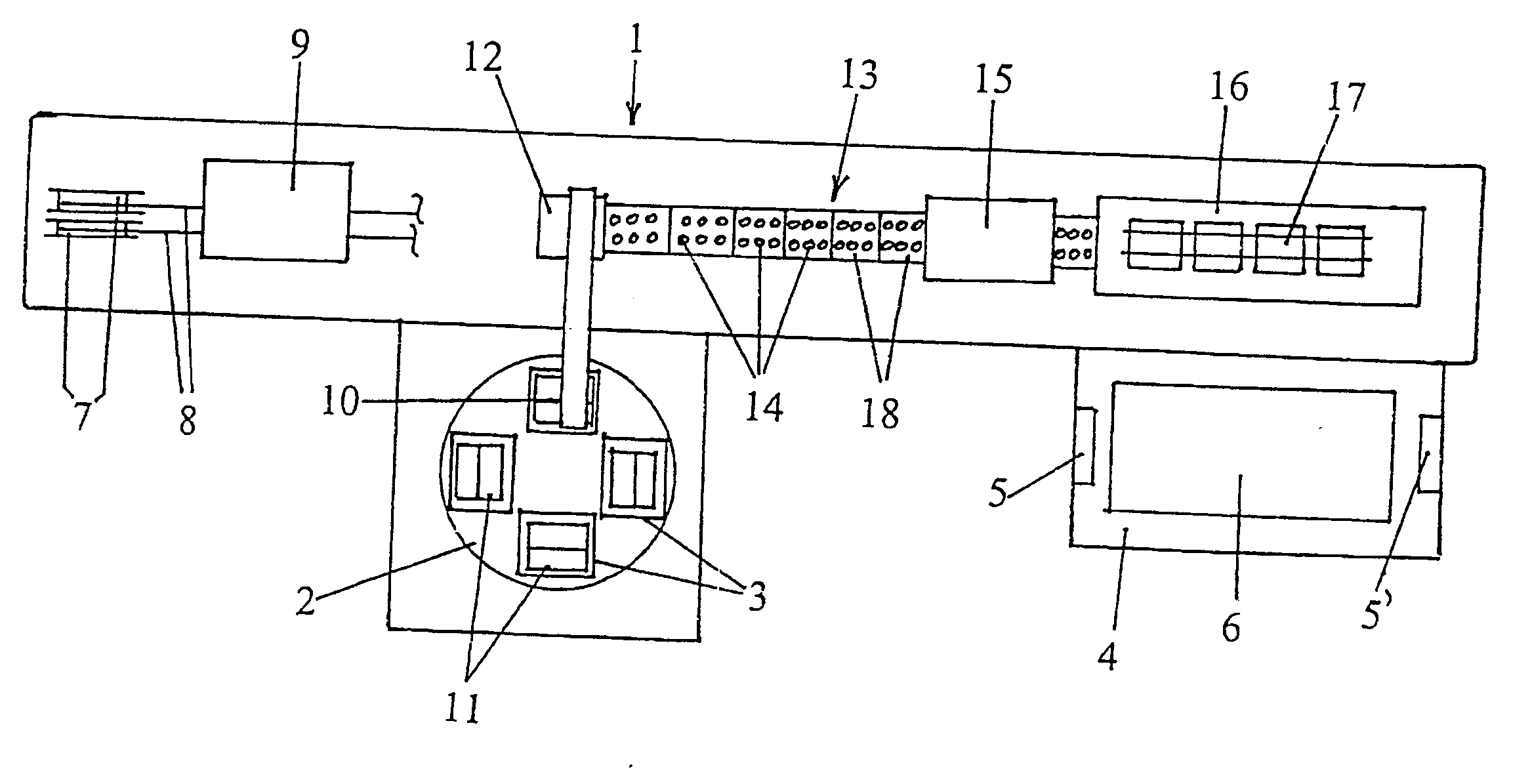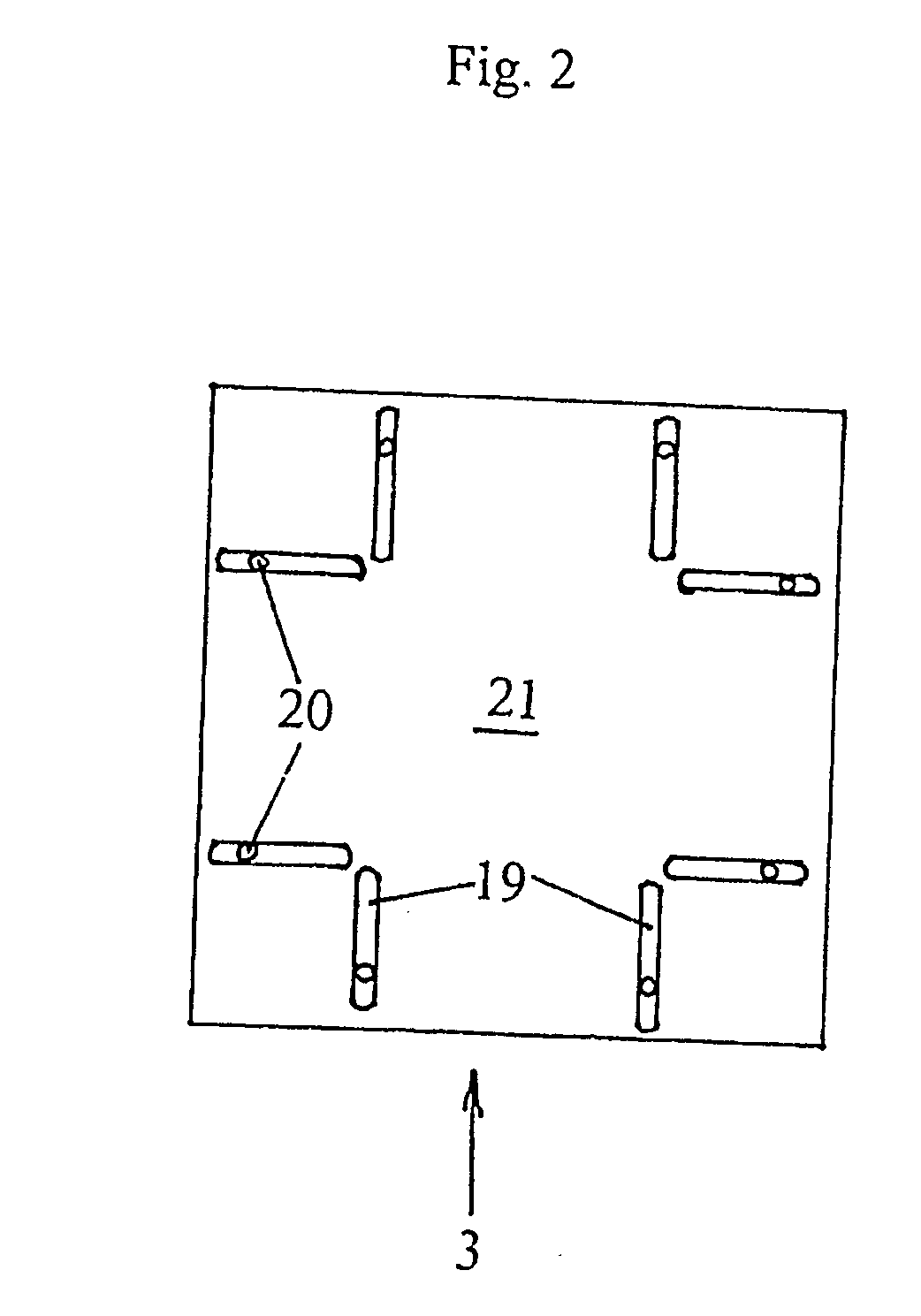Apparatus for the processing of photovoltaic cells
a photovoltaic cell and apparatus technology, applied in the direction of electrical apparatus, photovoltaic energy generation, basic electric elements, etc., can solve the problems of insufficient flexibility to respond to new developments in the industry, high cost of automated production lines, and easy mechanical damage of photocells
- Summary
- Abstract
- Description
- Claims
- Application Information
AI Technical Summary
Benefits of technology
Problems solved by technology
Method used
Image
Examples
Embodiment Construction
[0020] The apparatus according to the invention shown in FIG. 1 comprises a substantially linear production line 1, a laterally attached turntable 2 with a plurality of magazines 3, and a laterally attached receiving table 4, with inspection devices 5 and 6, for the completed photocells. Electrically conductive connectors 8 are retrieved from supply rolls 7, coated with a soldering preparation and pretreated in a drying arrangement 9. The drying of the soldering preparation ahead of the soldering station prevents a negative influence of laterally escaping soldering preparation upon the photocell surface during the contact of the metal connector 8 with the photocell.
[0021] A suction grip 10 retrieves individual photocells 11 from one of the magazines 3 with the sun side of the photocell 11 always directed upwards and moves them to a centering unit. In the centering unit, the photocells 11 are aligned relative to one of their outer edges and / or the current bus of the collector. The p...
PUM
| Property | Measurement | Unit |
|---|---|---|
| Thickness | aaaaa | aaaaa |
| Thickness | aaaaa | aaaaa |
| Angle | aaaaa | aaaaa |
Abstract
Description
Claims
Application Information
 Login to View More
Login to View More - R&D
- Intellectual Property
- Life Sciences
- Materials
- Tech Scout
- Unparalleled Data Quality
- Higher Quality Content
- 60% Fewer Hallucinations
Browse by: Latest US Patents, China's latest patents, Technical Efficacy Thesaurus, Application Domain, Technology Topic, Popular Technical Reports.
© 2025 PatSnap. All rights reserved.Legal|Privacy policy|Modern Slavery Act Transparency Statement|Sitemap|About US| Contact US: help@patsnap.com



